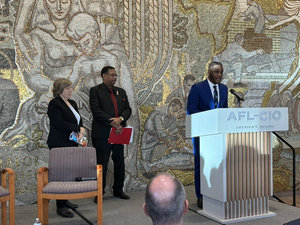AFL-CIO and Microsoft Announce New Tech-Labor Partnership on AI and the Future of the Workforce

The American Federation of Labor and Congress of Industrial Organizations (AFL-CIO) and Microsoft Corp. on Monday announced the formation of a new partnership to create an open dialogue to discuss how artificial intelligence (AI) must anticipate the needs of workers and include their voices in its development and implementation. This partnership is the first of its kind between a labor organization and a technology company to focus on AI and will deliver on three goals: (1) sharing in-depth information with labor leaders and workers on AI technology trends, (2) incorporating worker perspectives and expertise in the development of AI technology, and (3) helping shape public policy that supports the technology skills and needs of frontline workers.
Building upon the historic neutrality agreement the Communications Workers of America negotiated with Microsoft covering video game workers at Activision and ZeniMax, as well as the labor principles announced by Microsoft in June 2022, the partnership also includes an agreement with Microsoft that provides a neutrality framework for worker organizing by AFL-CIO affiliate unions. This framework confirms a joint commitment to respect the right of employees to form or join unions, to develop positive and cooperative labor-management relationships, and to negotiate collective bargaining agreements that will support workers in an era of rapid technological change.
“This partnership reflects a recognition of the critical role workers play in the development, deployment, and regulation of AI and related technologies,” said AFL-CIO President Liz Shuler. “The labor movement looks forward to partnering with Microsoft to expand workers’ role in the creation of worker-centered design, workforce training, and trustworthy AI practices. Microsoft’s neutrality framework and embrace of workers’ expertise signals that this new era of AI can also catalyze a new era of productive labor-management partnerships.” Read more here and in The New York Times.
